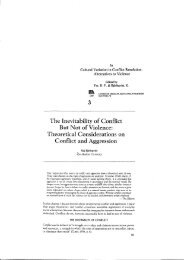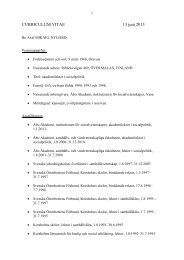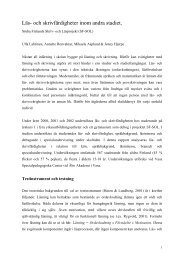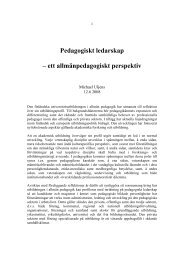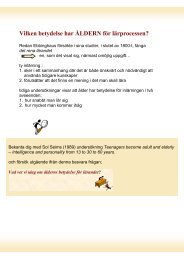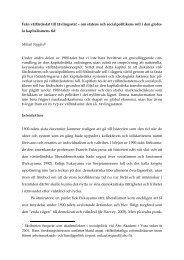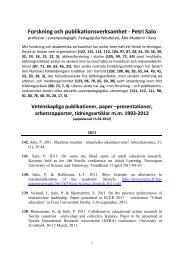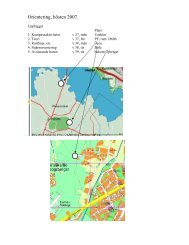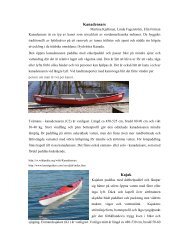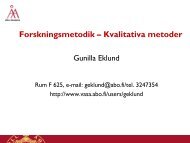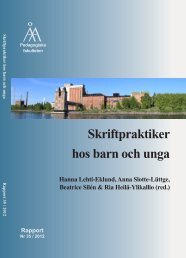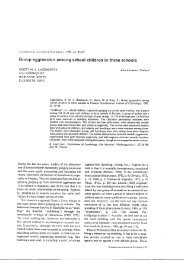Parties, Candidates and Citizens On-Line - Åbo Akademi
Parties, Candidates and Citizens On-Line - Åbo Akademi
Parties, Candidates and Citizens On-Line - Åbo Akademi
Create successful ePaper yourself
Turn your PDF publications into a flip-book with our unique Google optimized e-Paper software.
also free to purchase as much advertising time as they desire on national commercial TVchannels<br />
(Carlson 2001; Moring 1995). This media environment contains characteristics<br />
which have been noted to give minor <strong>and</strong> fringe political actors strong incentives for<br />
emphasizing web campaigning (Norris 2003: 25).<br />
In the 2003 election, 18 parties nominated a total of 2,013 c<strong>and</strong>idates. Three major<br />
parties – the Social Democratic Party, the Centre Party <strong>and</strong> the National Coalition Party –<br />
have dominated all Finnish parliamentary elections in modern times (cf. Moring 2003). In<br />
the 2003 election, the 679 c<strong>and</strong>idates of these parties received a total share of 67.8 per<br />
cent of the votes. These were followed by a group of minor parties – the Left Alliance,<br />
The Green League, The Christian Democrats, the Swedish Peoples’ Party <strong>and</strong> the True<br />
Finns – whose 885 c<strong>and</strong>idates received 29.4 per cent of the total votes. Ten fringe parties,<br />
running 449 c<strong>and</strong>idates, gathered a total of 2.8 per cent of the votes. As is evident from<br />
the aforementioned, the Finnish party system is quite highly fragmented (Raunio 2002).<br />
In sum, studying c<strong>and</strong>idate-level electoral competition on the internet in the<br />
Finnish context could prove especially interesting due to several specific features of the<br />
political environment in Finl<strong>and</strong>. The features mentioned here indicate that Finl<strong>and</strong> could<br />
be a country in which the patterns of inter-c<strong>and</strong>idate electoral competition could be<br />
different from those noted when studying inter-party competition in other contexts. The<br />
institutional settings also contain characteristics which, a priori, suggest that minor <strong>and</strong><br />
fringe parties’ c<strong>and</strong>idates might make more campaign efforts, both off- <strong>and</strong> on-line, than<br />
in other contexts.<br />
Research questions <strong>and</strong> design of the study<br />
The previous sections of the study have pointed at several circumstances as being<br />
potentially influential toward the on-line campaign practices of political c<strong>and</strong>idates. The<br />
Finnish context was also described <strong>and</strong> argued to be especially interesting to explore in a<br />
study of c<strong>and</strong>idate internet campaigning. Against this theoretical backdrop, the research<br />
questions <strong>and</strong> the overall design of the study are presented in this section.<br />
Two types of independent variables have been considered especially important in<br />
the theoretical discussion. Firstly, inter-party variables such as the size <strong>and</strong>, to some<br />
extent, ideological position of a c<strong>and</strong>idate’s party which were regarded as related to a<br />
c<strong>and</strong>idate’s internet campaigning. Secondly, intra-party variations were also seen as<br />
potentially important concerning c<strong>and</strong>idate web campaigning. Specifically, a c<strong>and</strong>idate’s<br />
competitiveness <strong>and</strong> the electoral status as either incumbent or challenger were<br />
considered. Keeping the discussion of the Finnish context in mind, the research questions<br />
presented in the introduction can now be specified as follows:<br />
122



